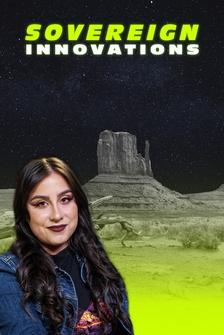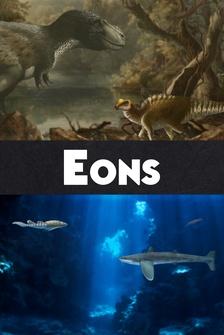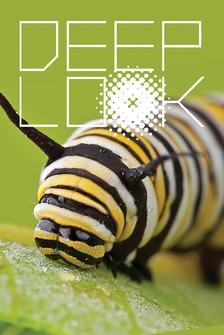(narrator) This is one of the flattest places on Earth, 46 square miles of salt and crusted desert as far as the eye can see.
It's also one of the most desolate places not much lives here, besides salt-loving bacteria.
So it's the last place you'd expect to hear this.
[engine rumbling] [upbeat music] With nothing to crash into and no elevation to slow them down, racers have been chasing land speed records here for more than a hundred years, using wacky street cars, handcrafted motorcycles, and whatever this thing is.
It's also a great place to film people dragging heavy stuff around and being kind of pissed off about it.
But over the last 30 years, the salt that makes this desolate and daring landscape possible is disappearing, and scientists are racing to figure out why.
[gentle music] This is Jalika, she's a crew chief, or team manager for one of the teams that races here.
And this year, she brought the team's newest member, eight month old Sequoia.
(Jalika) I started bringing her out here now as a baby, hoping that maybe she would find an interest in either land speed racing, or engineering, or science, or something like that., 'cause it was going to be a family affair one way or the other.
We knew that right from the start.
(narrator) Jalika and her husband, Alp, got married on the flats and had one of the racing officials officiate.
The salt is perfect and it brings all these people together.
(narrator) But like most of the racing community, they know the landscape is changing.
Every year, the Salt Flats Association paves the salt crystals into a smooth, flat surface, perfect for speed.
And even though this is a desert, the salt actually keeps the surface cool.
It's so white, it reflects much of the sun's thermal radiation, keeping the ground cool and preventing tires from overheating, and cool tires means fewer blowouts at high speeds.
Racing events in 2014 and 2015 were canceled because the salt crust was too thin and slushy to drive on.
(Jalika) We are lucky if we got a quarter of an inch all out.
I don't know that I'm hopeful that it will stay at this level, mainly because of what I've heard from racers that have been racing since like the 1960s and what the difference has been since then all the way up to here, it's humongous.
(narrator) To know why the salt is disappearing, geologists like Brenda Bowen and Jeremiah Burnau had to figure out how it got here in the first place.
(Jeremiah) We like to use the terminology of flooding, evaporation, desiccation cycles.
Most of the time when we think about a salt flat, we're like, yeah, it's just a dry, desolate expanse.
But it turns out, depending on the year, most of the time it could be actually a very large expansive shallow pond.
As that system transitions from pond to salt flat, as the water evaporates out, all these new crystals of halite start forming and create a new bright surface that actually, it will sparkle in the morning sunlight and I can actually see that grow on our time-lapse camera and just expand outwards.
On daily timescales, you can see salt just popping into existence.
(narrator) The Salt Flats are part of a Closed Basin, meaning they're completely disconnected from rivers or streams that could drain them.
All the water that comes in stays in until it evaporates.
What's left behind are the minerals, primarily rock salt, but the water that brought the salt in originally isn't there anymore.
(Jeremiah) You can see there's these giant ditches that are pulling groundwater out of the system.
Just to the south, there's a large potassium mine, which is a really important agricultural fertilizer.
(narrator) The potassium mine pulls 5 billion gallons of groundwater out of the system every year.
It's an economic boon to the region.
In 2016 alone, it brought in a billion dollars to the Utah economy, but the mining relies on pulling out groundwater from a system that took millions of years to form.
(Brenda) These are waters that have been traveling through the subsurface for up to 10,000, 15,000 years.
So a long time for these waters to accumulate all these solutes and then discharge at these points.
It took millions of years to form this landscape and we're altering it in centuries.
(narrator) But it's tricky to just blame the mine for the salt's disappearance because there are a lot of other factors that affect the whole landscape.
(Brenda) In general, this whole part of the world is seeing a decrease in groundwater levels, both with changes in climate and also intense water demand.
(narrator) And worldwide, saline lake systems like this one are shrinking.
The Dead Sea in Jordan, Owens Lake in California, the Arrow Sea in Kazakhstan, all of them are drying out.
A hundred miles east of the Bonneville Salt Flats, the Great Salt Lake is at historic lows.
It's lost 50% of its volume and dropped 11 feet In the last 10 years.
Historic drought and pressure from a booming and thirsty population diverts water into municipal wells instead of replenishing the great Salt Lake (Brenda) We have these mud flats that in some cases have toxic sediments being exposed and then wind events putting that into the atmosphere and causing air quality and health issues.
(narrator) The Salt Flats still have a protective cap of salt to prevent air quality issues, but that will change in the future.
(Brenda) We need to have a more holistic view of how we're valuing these whole landscapes and managing water in a way that you have enough water coming into the system.
(narrator) But to manage a system, you have to understand it.
Brenda and her team are working on that and trying to include the community as much as possible in the research.
So there's a collective definition of what sustainable management means here.
(Brenda) Sustainable management is in this situation where we have all of the different stakeholders involved in the conversation and we're working towards that.
(Alp) We have to be responsible, otherwise the next generations are not gonna experience this beautiful place.
(Jeremiah) The water used to flow into the Salt Flats from the south, and there's an interstate highway there.
There's train tracks, there's a mine.
Like, the water's not gonna flow naturally into this system anymore.
So how do we live with what we got?
[upbeat music] Accessibility provided by the U.S. Department of Education.
[upbeat music continues] [upbeat music continues] [upbeat music fades]















